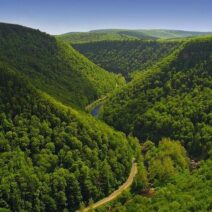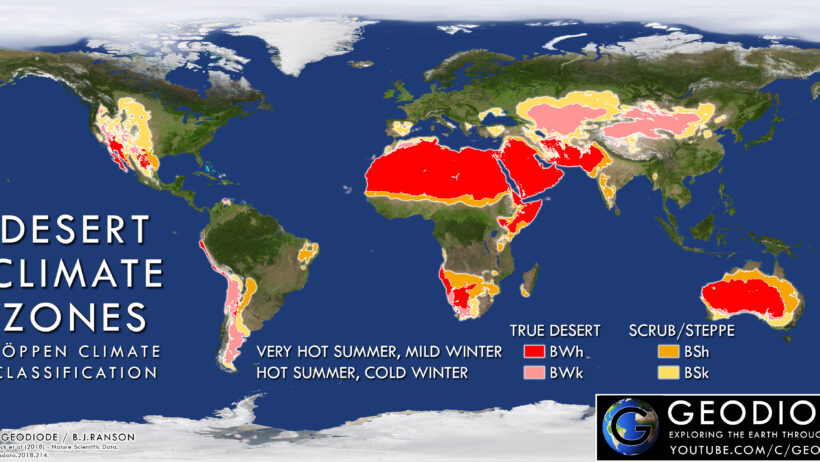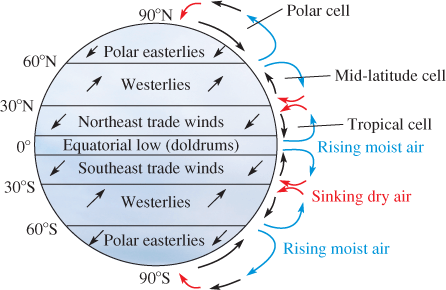Deserts, often characterized by arid landscapes and sparse vegetation, are regions that evoke a sense of mystery and intrigue. Despite their barren appearance, deserts are complex ecosystems with distinct atmospheric conditions that merit deeper exploration. Understanding desert weather involves demystifying the various climatic factors that contribute to their unique environments. This article endeavors to elucidate the intricacies of desert climates, delving into their characteristics, types, and the implications of their weather patterns.
At the core of desert climate is the overarching definition: any area that receives less than 250 millimeters of precipitation annually is classified as a desert. This scant rainfall results in pronounced moisture deficits, which dictate the flora and fauna that can survive within these regions. It is essential to recognize that the term “desert” does not merely denote a dry area; it encompasses a variety of climatic conditions, some of which may be surprising.
Deserts can be categorized into four primary types: hot deserts, cold deserts, coastal deserts, and semiarid deserts. Each type possesses unique characteristics that differentiate them from one another.
Hot Deserts
Hot deserts, such as the Sahara in North Africa and the Mojave in the United States, experience extreme temperature fluctuations. Daytime temperatures may soar above 40 degrees Celsius (104 degrees Fahrenheit), while nights can be quite chilly. This diurnal temperature range is largely attributable to the lack of cloud cover and vegetation, which would otherwise retain heat. The arid conditions in these regions create a landscape dominated by sand dunes, rocky plateaus, and scarce vegetation adapted to cope with intense heat.
Cold Deserts
Conversely, cold deserts, like the Gobi Desert in Mongolia, exhibit a markedly different climate. These regions experience cold winters where temperatures can plunge below freezing. The precipitation in cold deserts is typically in the form of snow, contributing to the overall aridity of the landscape. Although the term “desert” often conjures images of sand, many cold deserts exhibit a diverse range of geological formations, from wind-sculpted rocks to ice-covered plains.
Coastal Deserts
Coastal deserts, such as the Atacama Desert in Chile, are often subject to unique climatic influences due to their proximity to oceanic bodies. These deserts may experience more moderate temperatures and relatively higher humidity levels than their inland counterparts. However, they still fall under the classification of desert due to their minimal rainfall. The dramatic landscapes of coastal deserts, punctuated by cliffs, saline flats, and unique ecosystems, exemplify the impact of geographical location on climatic conditions.
Semiarid Deserts
Semiarid deserts, like the Great Basin in the United States, function as a transitional zone between desert and more temperate climates. These regions receive slightly more precipitation than true deserts, often allowing for more diverse vegetation. The presence of grasses and shrubs is a hallmark of semiarid desert landscapes, demonstrating the resilience of life even in the face of scarce water resources.
It is imperative to understand the meteorological phenomena that shape desert climates. The prevailing winds play a crucial role in determining the moisture levels experienced within these regions. As warm air rises and cools, it condenses to form precipitation. In desert regions, however, this precipitation often occurs in distant areas—away from the desert itself—resulting in the characteristic aridity.
In addition to wind patterns, the geographical positioning of deserts also influences their climates. Many deserts are found in the rain shadow of mountain ranges, where moist air is forced to ascend. As it rises, it cools and loses moisture through precipitation on the windward side. By the time the air descends on the leeward side, it has lost much of its moisture, creating the dry conditions typical of desert environments.
Moreover, the phenomenon of climate change is exacerbating the already tenuous balances of desert ecosystems. As global temperatures increase, many deserts are experiencing shifts in their precipitation patterns. Some have seen an increase in severe droughts, while others may undergo sporadic but intense rainfall, leading to flash floods—a stark contrast to their usual aridity. These alterations can have detrimental impacts on local flora and fauna that have adapted to a specific set of climatic conditions.
The biodiversity of desert regions is often overlooked. Despite their harsh environments, deserts are home to a myriad of life forms. Adaptations such as nocturnal behavior, water conservation, and specialized physiology are essential for survival within these climates. For instance, succulents have developed the ability to store water in their leaves, while many animals have evolved to be either transient or hibernative during the peak heat.
Additionally, human encroachment and the exploitation of desert resources pose significant ecological challenges. Urban development, agricultural expansion, and mining activities can lead to habitat degradation, further stressing the delicate balance of desert ecosystems. It is imperative that policy and sustainable practices are adopted to preserve the integrity of these extraordinary environments.
As we unravel the complexities of desert weather and climate, it becomes evident that these regions are not simply vast, empty landscapes. They are dynamic systems shaped by intricate geological and meteorological interactions. Understanding the environmental significance of deserts and advocating for their protection is essential, not only for biodiversity but also as a cornerstone of our planet’s ecological health. The future of these climates hinges on our collective awareness and responsibility.







